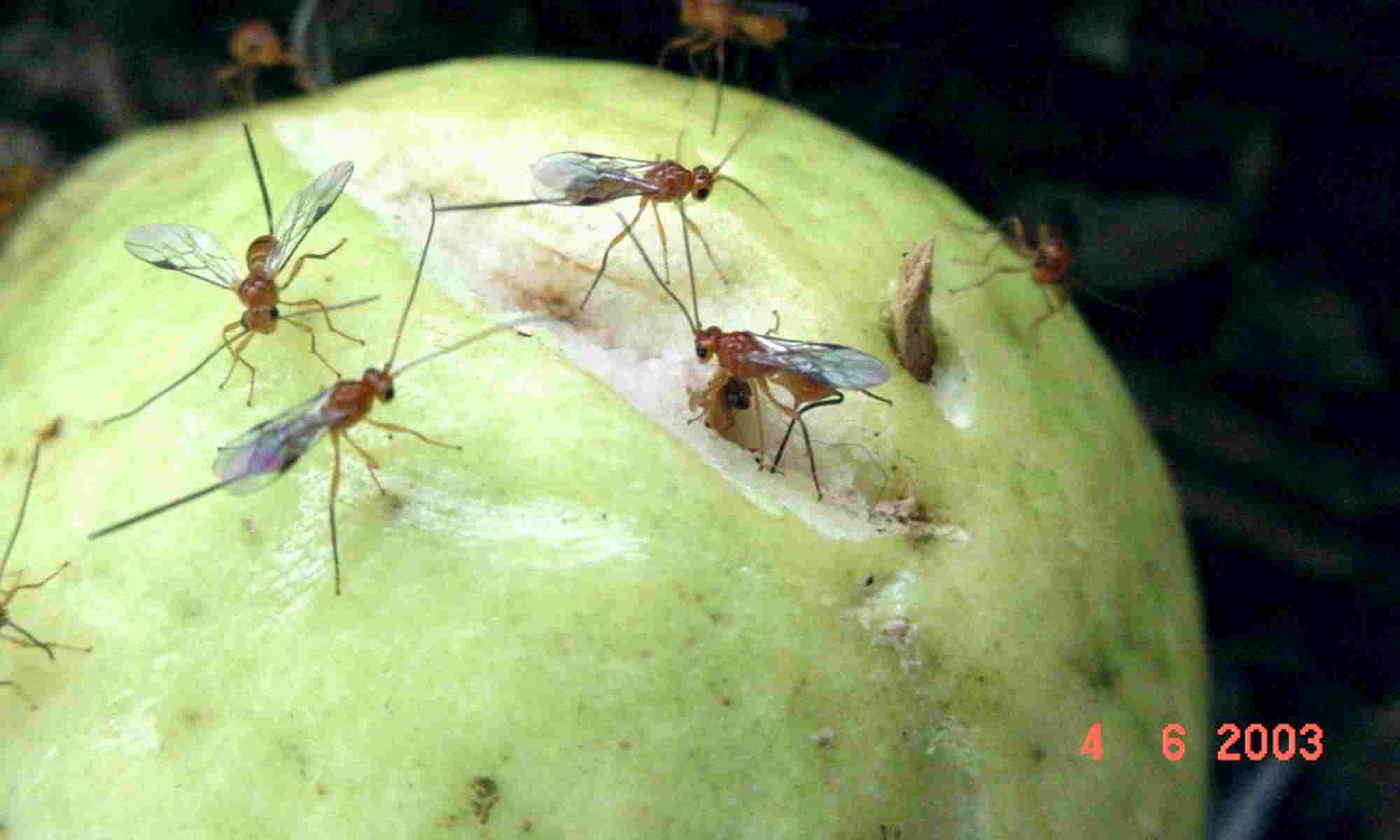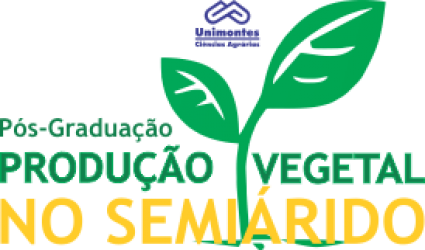- Version
- Download 2
- File Size 968.41 KB
- Create Date 14/06/2021
- Download
PRATES, Paola Junayra Lima. Aplicação do composto orgânico humificado associado ao paclobutrazol no florescimento e produção da mangueira ‘Palmer’. 2020. 41 p. Dissertação (Mestrado em Produção Vegetal no Semiárido) – Universidade Estadual de Montes Claros, Janaúba, 2020.
A região Norte de Minas Gerais destaca-se na produção de manga pelo uso de paclobutrazol (PBZ), fitorregulador de crescimento vegetal que, juntamente com outras práticas de manejo, proporciona o florescimento mais uniforme e em qualquer época do ano. Todavia, a eficiência dele é muito instável, devido à pouca mobilidade da molécula no solo. Substâncias húmicas têm-se mostrado promissoras na potencialização de absorção de íons e moléculas, pois há indícios na literatura que ácidos húmicos e fúlvicos apresentam efeitos na absorção de íons, podendo contribuir para absorção do PBZ pelo sistema radicular. Neste sentido, objetivou-se com este estudo avaliar a aplicação de doses do composto orgânico humificado associado a doses do paclobutrazol no florescimento, produção e qualidade de frutos da mangueira ‘Palmer’ em duas épocas de produção. Foram realizados dois experimentos em épocas e áreas de produção distintas, ambos situados no município de Matias Cardoso, MG. O primeiro experimento, realizado entre os meses de julho de 2018 e abril de 2019,teve sua implantação na estação seca e sua finalização com colheita na estação chuvosa; já o segundo experimento, realizado entre os meses de outubro de 2018 e julho de 2019, teve sua implantação na estação chuvosa e sua finalização com colheita na estação da seca. O delineamento experimental adotado foi em blocos ao acaso, com quatro repetições, no esquema fatorial 4x2+1, correspondendo a doses do composto orgânico humificado (10; 15; 20; 25mL por planta) e doses do paclobutrazol (0,7 e 0,85g de ingrediente ativo/m de diâmetro de copa), mais um controle (somente paclobutrazol: 0,85 g de ingrediente ativo/m de diâmetro de copa). Foram avaliadas características vegetativas, fisiológicas, reprodutivas, produtivas, assim como a qualidade dos frutos, as quais foram submetidas à análise de variância e testes de regressão ou de média. Na primeira época de produção, houve efeito significativo apenas para algumas características. Quando se comparou o efeito dos tratamentos (composto orgânico associado ao PBZ) com o controle, verificou-se maior teor de clorofila para os tratamentos, indicando possível influência do composto orgânico na superfície assimilatória das folhas. O acréscimo das doses do composto orgânico proporcionou aumento linear no número total de flores e no número de flores masculinas por panícula axilar, porém, redução linear no teor de sólidos solúveis. A utilização da menor dose de PBZ (0,70 g de i.a/m) promoveu maior teor de sólidos solúveis e acidez titulável nos frutos. As demais características da primeira época não foram influenciadas. Os tratamentos não influenciaram nenhuma das características na segunda época de produção. A produtividade média da mangueira ‘Palmer’ na primeira e segunda épocas foi superior à média regional e brasileira. Porém, a primeira época foi mais responsiva aos efeitos dos tratamentos, sugerindo possível influência da temperatura e precipitação. Por questões de economia no sistema de produção e das características mais importantes não terem sido influenciadas pelos tratamentos não se justifica a utilização do composto orgânico humificado associado ao paclobutrazol no manejo de indução floral de mangueira ‘Palmer’, justificando-se o uso apenas do paclobutrazol isolado.
Palavras-chave: Mangifera indica, substâncias húmicas, regulador vegetal, indução floral.
Application of the humid organic compound associated with paclobutrazol in the flowering and production of the 'palmer' mango tree
The northern region of Minas Gerais stands out in the production of mango by the use of paclobutrazol (PBZ), a plant growth regulator that, together with other management practices, provides the most uniform flowering at any time of the year. However, its efficiency is very unstable, due to the little mobility of the molecule in the soil. Humic substances have shown promise in enhancing the absorption of ions and molecules, since there are indications in the literature that humic and fulvic acids have effects on the absorption of ions, which may contribute to the absorption of PBZ by the root system. In this sense, the objective of this study was to evaluate the application of doses of the humid organic compound associated with the doses of PBZ in the flowering, production and fruit quality of the 'Palmer' mango tree in two seasons. Two experiments were carried out at different times and areas of production, both located in the municipality of Matias Cardoso, MG. The first experiment, carried out between the months of July 2018 and April 2019, had its implantation in the dry season and its conclusion with harvest in the rainy season, while the second experiment, carried out between the months of October 2018 and July 2019 , had its implantation in the rainy season and its conclusion with harvest in the dry season. The experimental design adopted was in randomized blocks, with four replications, in a 4x2 + 1 factorial scheme, corresponding to doses of humidified organic compound (10; 15; 20; 25 mL per plant) and doses of paclobutrazol (0.7 and 0 , 85g of active ingredient / m of crown diameter), plus a control (paclobutazole only: 0.85 g of active ingredient / m of crown diameter). Vegetative, physiological, reproductive, productive characteristics as well as the quality of the fruits were evaluated, by which they were subjected to analysis of variance and regression or average tests. In the first production season, there was a significant effect on the relative chlorophyll content (SPAD index), total number of flowers, male flowers number, soluble solids content and titratable acidity. The other characteristics of the first season were not influenced. The treatments did not influence any of the characteristics in the second season of production. When the effect of treatments (organic compound associated with PBZ) was compared with the control, there was higher chlorophyll content for the treatments, indicating possible influence of organic compost on the leaf assimilation surface. The increase in doses of organic compost linearly increased the total number of flowers (452) and the number of male flowers (373) per axillary panicle at the maximum dose of 25mL / plant. However, at the same dose, the soluble solids content was reduced to 12.72 ° Brix. The use of the lowest dose of PBZ (0.70 g a.i./m) was sufficient to promote a higher content of soluble solids and titratable acidity in the fruits. The average productivity of the first and second seasons was higher than the regional and Brazilian average. However, the first season was more favorable to obtain the results, suggesting possible influence of temperature and precipitation. For economical issues in the production system and the most important characteristics not having been influenced by the treatments, the use of the humid organic compound associated with the paclobutrazol in the management of floral induction of 'Palmer' mango tree, justifying the use of paclobutrazol alone.
Keywords: Mangifera indica, humic substances, plant regulator, floral induction.

